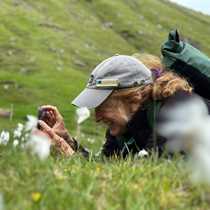Lewis was meticulous in his descriptions of plants, birds, animals, fish, landmarks, and even the native peoples. His descriptions often ran 500 words or more and usually included not only visual descriptions, but the texture, smell, taste and sound. Upon a further investigation of bighorn habitat Lewis noted "The sides of the Clifts where these anamals resort much to lodge...have the peculiar smell of the sheepfolds." While we were not privileged to experience this scent sensation, we were delighted with the visual aspect of four separate bands of bighorn sheep. Each band had its master, a bighorn ram with three-quarter curl horns or better.
Call +1.800.397.3348 or contact your travel advisor




